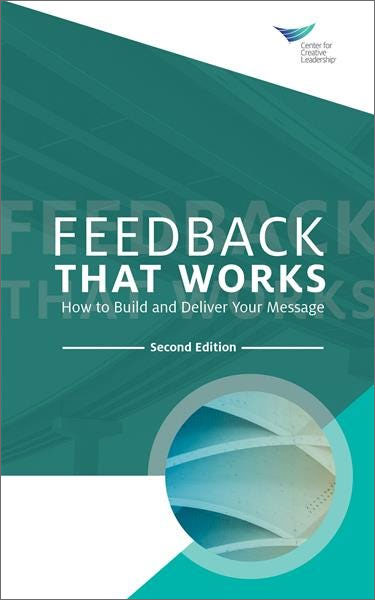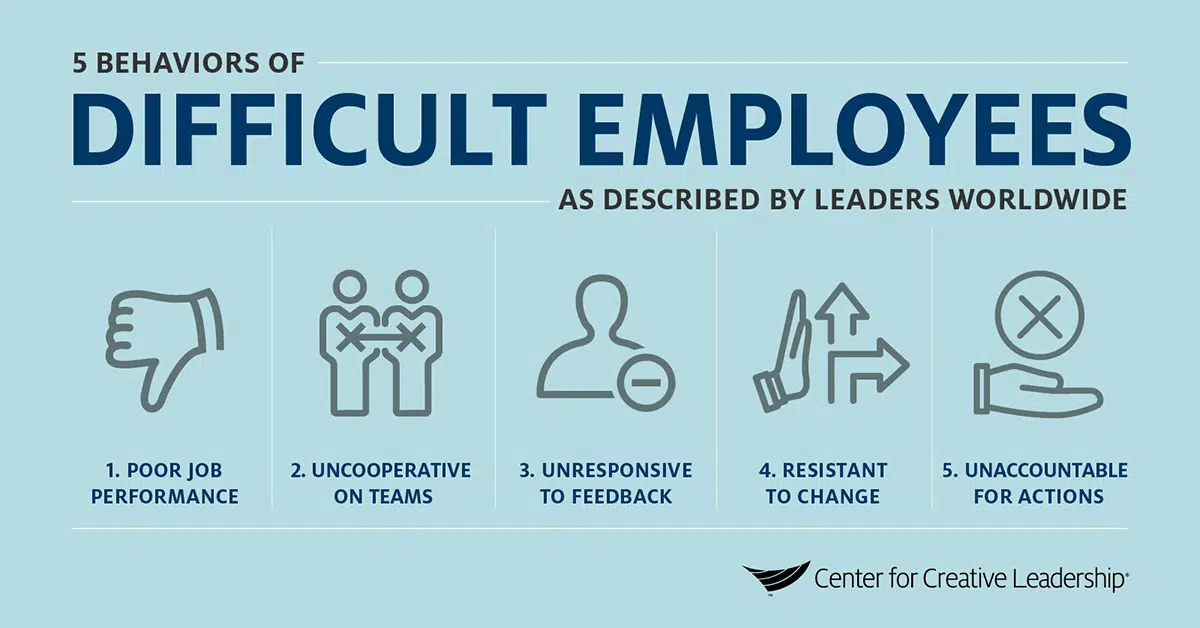Everybody’s worked with a difficult employee or coworker before, whether it’s a passive-aggressive colleague, an explosive boss, or a unresponsive direct report. But despite their prevalence, many leaders feel unwilling or unable to deal with them effectively. And that hurts everyone.
Difficult employees can have a negative impact on their team, but also on the career of their boss, our research shows. The good news — if you’re willing to deal with your difficult employee and confront him or her about their unacceptable behaviors, you can probably create a more positive outcome for everyone involved.
We’ve long known that confronting difficult employees results in better outcomes for organizations and for leaders themselves. A classic study of managers shows the benefit of taking action: Leaders who consistently confronted difficult employees tended to achieve better overall team performance. They’re also more likely to get promoted.
Why You Should Deal With Difficult Employees
There are several reasons why confronting difficult employees improves results. In some instances, it can result in positive behavioral changes. It may also signal to others what effective behavior looks like, and it indicates that managers are paying attention to the performance of the team. Plus, other group members may be more motivated if they know difficult employees are being managed and coached, rather than being ignored or left to diminish the work and morale of the team.
The effect of these difficult employees and others like them is clear. Our research shows difficult employees hurt their work groups in 5 primary ways:
- Eroding trust
- Reducing innovation
- Reducing output
- Disrupting decision-making
- Damaging the team’s reputation
But that’s not all. Difficult employees also hurt their leaders by reducing your effectiveness, impairing your reputation, reducing your desire to stay in the department, decreasing your desire to stay with the organization, and diminishing your chances of a promotion, according to our research.
So, what can you do about it? How do you deal with a difficult employee?
5 Common Behaviors of Difficult Employees
Watch for These Problems
First, it’s important to consider what kind of difficult employee you’re dealing with. To better understand what you’re up against, we studied the scope of the issue by surveying more than 200 global leaders about “problem” employees. As noted in our white paper, we found that these 5 behaviors are most common:
1. Poor job performance.
An employee whose work falls below expectations, causing others to constantly have to pick up the slack, can be a tremendous drain on teams — especially when it’s habitual.
2. Uncooperative on teams.
Employees who struggle to work well with others or create positive relationships with their colleagues, clients, or customers can be a liability.
3. Unresponsive to feedback.
Employees who aren’t responsive to coaching or feedback fail to make necessary changes despite repeated, explicit attempts to work with them.
4.Resistant to change.
Leaders report issues with employees who resist change, or who may even refuse a change altogether.
5. Unaccountable for actions.
An unwillingness to take responsibility for their actions and instead blame others also ranked highly as a common negative attribute, regardless of the exact form the behavior took.
How to Deal With a Difficult Employee
10 Tips for Leaders
Based on decades of research and experience, we recommend using our Situation – Behavior – Impact (SBI)™ model to give the most effective feedback.
Ideally, giving consistent feedback — including praise — will result in better behaviors and performance from all employees. SBI can be used to reinforce positive behavior, but we also recommend learning how to have a coaching conversation with your employees.

Providing feedback to others about their performance is a key developmental experience. Learn how to make the feedback you give even more effective so that others can benefit from your message.
Difficult conversations are often necessary because better conversations didn’t happen early on. You can get ahead of trouble instead of waiting for it to arrive by helping your organization to foster truth and courage by developing coaching skills and a coaching culture.
When giving feedback, especially when dealing with difficult employees, try to remember these 10 best practices:
- Be timely and deal with issues as they arise.
- Be open to the employee’s perspective.
- Keep it short, and let the employee respond.
- Show empathy and genuine care.
- Don’t sandwich negative feedback between positive reinforcement.
- Give positive feedback when it’s deserved.
- Aim for a 3:1 ratio of positive to negative feedback.
- Practice what you’re going to say, and how.
- Aim for behavioral awareness, not “fixing” someone.
- Create a favorable environment for feedback.
What if none of that works?
If you’ve repeatedly tried to provide feedback to your difficult employee and the difficult conversations still aren’t working, it’s time to consider other options. Sometimes you can help people the most by guiding them to pursue opportunities better suited to their capabilities, though it’s important to approach this with care. Seek involvement and counsel from a supervisor, the HR department, or legal counsel.
Before you escalate a situation, be sure that you’ve made every effort to be fair, and that you’ve kept a written record of the problem behaviors, the impact of these behaviors, and the feedback that you delivered. This could reduce both pushback from your superiors or from the difficult employee, and it may lower litigation risks or negative repercussions that might impact internal or public perceptions of your organization.
Hopefully, it won’t rise to that level. But we understand that the daunting possibility is why some leaders make the costly choice to avoid dealing with potential conflict with a difficult employee altogether.
Just remind yourself, taking action and dealing with the difficult employee is really in the best interest of you, your team, the employee in question, and the entire organization.
Ready to Take the Next Step?
Partner with us to create a customized learning journey for your leaders using our research-backed modules. Available leadership topics include Conflict Resolution, Emotional Intelligence, Feedback that Works, Listening to Understand, Psychological Safety, and more. Or, upskill your team so they can more effectively hold tough conversations and deal with difficult employees by building conversational skills across your organization.










